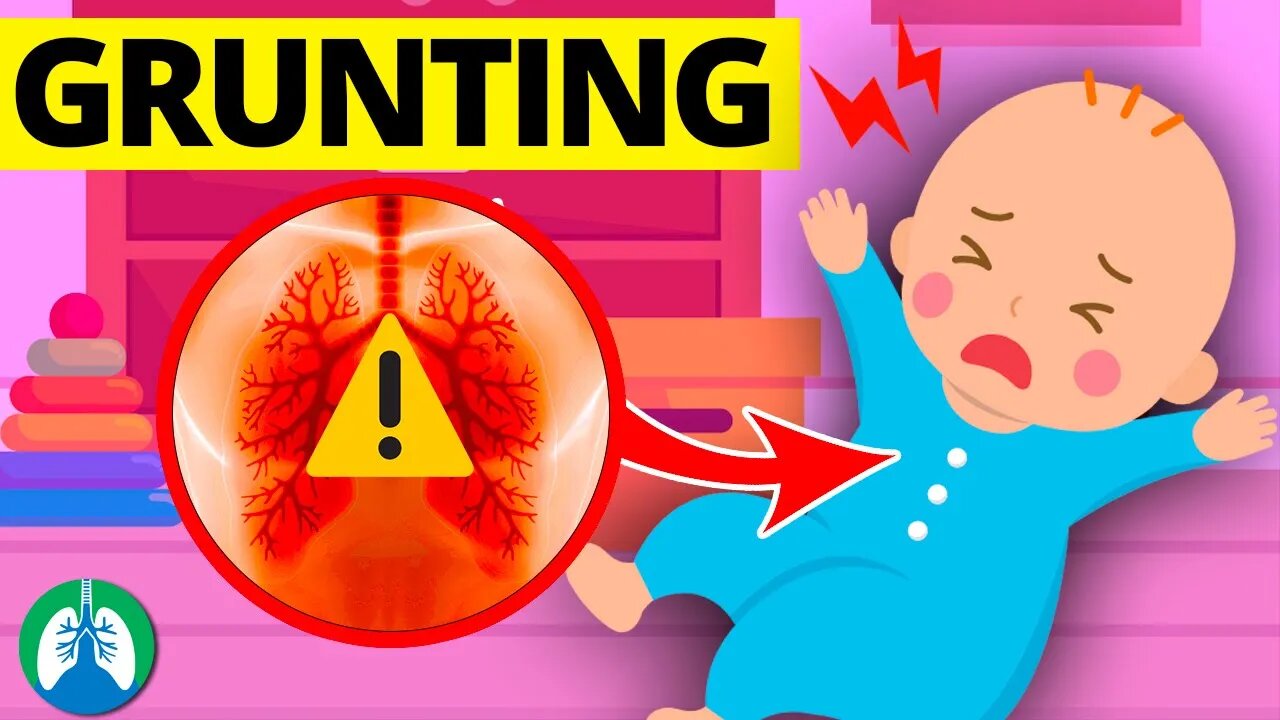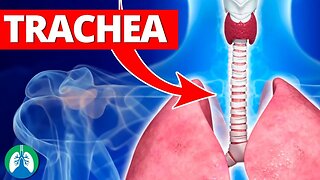Premium Only Content

Infant Grunting (Respiratory Distress) | Medical Overview
What is infant grunting? Is it a sign of respiratory distress? Watch this quick video for a medical overview of this topic!
💥Expiratory Grunting [Full Guide] ➜ ➜ ➜ http://bit.ly/3XrZNau
💥Respiratory Therapy Definitions [Glossary] ➜ ➜ ➜ https://bit.ly/3g6s4Pj
➡️ Causes
As previously mentioned, infant grunting can be caused by various factors, including infection, anatomical abnormalities, and even normal development. One of the most common causes is a condition known as transient tachypnea of the newborn, or TTN. This occurs when a baby's lungs are not able to clear fluid as quickly as they should after birth. This can lead to difficulty breathing and a characteristic grunting noise. Another common cause of infant grunting is a lower respiratory tract infection, such as pneumonia or bronchiolitis. These conditions can cause inflammation and mucus buildup in the lungs, making it difficult for the infant to breathe.
In some cases, grunting may also be a sign of a more serious condition, such as a congenital diaphragmatic hernia. This is a birth defect in which the diaphragm does not form properly, allowing organs from the abdomen to push into the thoracic cavity and restrict lung growth.
➡️ Sign and Symptoms
Recognizing the signs of infant grunting can be challenging, as the noise can be difficult to hear and may not always be present. However, some common signs to look for include:
- Rapid breathing
- Difficulty breathing
- Flaring nostrils
- Chest retractions
- Cyanosis
If you suspect that your baby is grunting or experiencing difficulty breathing, it is important to seek medical attention right away. The doctor will be able to perform a thorough examination and determine the cause of respiratory distress.
➡️ Treatment
Treatment for grunting will depend on the underlying cause, but some examples include:
- Nasal CPAP therapy
- Antibiotics for infection
- Exogenous surfactant
- Oxygen therapy for hypoxemia
- Surgery for congenital diaphragmatic hernia
Expiratory grunting is also one of the factors that determine an infant's Silverman-Anderson Index. This is a test that is used to determine an infant’s level of respiratory distress by assessing their chest movement, intercostal retractions, xiphoid retractions, nasal flaring, and, of course, expiratory grunting.
💥Expiratory Grunting [Full Guide] ➜ ➜ ➜ http://bit.ly/3XrZNau
—————
📗 BEST STUDY GUIDES FOR YOU
▪ TMC Test Bank 👉 http://bit.ly/2IGeqSu
▪ Hacking the TMC Exam 👉 http://bit.ly/2XBc8do
▪ TMC Exam Bundle (Save $) 👉 https://bit.ly/34pqEsV
▪ Daily TMC Practice Questions 👉 http://bit.ly/2NnXh3C
💙MORE FROM RTZ
▪ Free TMC Practice Exam 👉 http://bit.ly/2XlwASL
▪ Free RRT Cheat Sheet 👉 http://bit.ly/2IbmOKB
▪ Resources for RT's 👉 http://bit.ly/2WVV5qo
▪ Testimonials 👉 http://bit.ly/2x7b5Gl
🌐FOLLOW US
▪ Instagram 👉 http://bit.ly/2FhF0jV
▪ Twitter 👉 http://bit.ly/2ZsS6T1
▪ Facebook 👉 http://bit.ly/2MSEejt
▪ Pinterest 👉 http://bit.ly/2ZwVLPw
🚑MEDICAL DISCLAIMER
This content is for educational and informational purposes only. It is not intended to be a substitute for professional medical advice, diagnosis, or treatment. Please consult with a physician with any questions that you may have regarding a medical condition. Never disregard professional medical advice or delay in seeking it because of something you watch in this video. We strive for 100% accuracy, but errors may occur, and medications, protocols, and treatment methods may change over time.
💡AFFILIATE DISCLAIMER
This description contains affiliate links. If you decide to purchase a product through one of them, we receive a small commission at no cost to you.
—————
⏰TIMESTAMPS
0:00 - Intro
0:34 - Causes
1:40 - Signs
2:19 - Treatment
—————
🖼CREDIT FOR MUSIC AND GRAPHICS:
▪ Music licensed from Audiojungle.net/
▪ Graphics: Canva.com, Freevector.com, Vecteezy.com, and Pngtree.com
#grunting #infantgrunting #respiratorydistress
-
 3:21
3:21
Respiratory Therapy Zone
1 year agoTrachea (Medical Definition) | Quick Explainer Video
284 -
 2:08:48
2:08:48
TheSaltyCracker
7 hours agoLefty Grifters Go MAGA ReeEEeE Stream 12-22-24
132K341 -
 1:15:40
1:15:40
Man in America
9 hours agoThe DISTURBING Truth: How Seed Oils, the Vatican, and Procter & Gamble Are Connected w/ Dan Lyons
40.3K33 -
 6:46:07
6:46:07
Rance's Gaming Corner
11 hours agoTime for some RUMBLE FPS!! Get in here.. w/Fragniac
131K1 -
 1:30:48
1:30:48
Josh Pate's College Football Show
11 hours ago $4.49 earnedCFP Reaction Special | Early Quarterfinal Thoughts | Transfer Portal Intel | Fixing The Playoff
34.3K -
 23:55
23:55
CartierFamily
3 days agoElon & Vivek TRIGGER Congress as DOGE SHUTS DOWN Government
111K101 -
 5:43:44
5:43:44
Scammer Payback
2 days agoCalling Scammers Live
182K26 -
 18:38
18:38
VSiNLive
2 days agoProfessional Gambler Steve Fezzik LOVES this UNDERVALUED Point Spread!
140K17 -
 LIVE
LIVE
Right Side Broadcasting Network
10 days agoLIVE REPLAY: President Donald J. Trump Keynotes TPUSA’s AmFest 2024 Conference - 12/22/24
3,000 watching -
 4:31
4:31
CoachTY
1 day ago $27.90 earnedCOINBASE AND DESCI !!!!
180K11